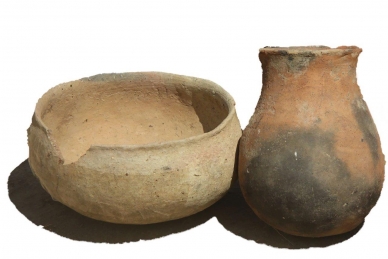The University of Central Asia’s (UCA) mission to help the people of Central Asia preserve and draw upon their rich cultural traditions and heritages as assets for the future came to fruition when valuable archaeological artefacts were found on UCA’s Naryn campus in Kyrgyz Republic.
uca-kyrgyz-republic-skeleton.jpg

The University of Central Asia approached Dr. Kubat Tabaldyev, archaeologist of Kyrgyz-Turkish Manas University, to lead an archaeological survey of the area. His team discovered internment sites and artefacts spanning the Stone, Bronze, early Iron and Middles Ages, indicating continuous settlement of the area. In 2014, Russian archaeologist Yuriy Sergeevich Khudyakov joined Tabaldyev, and they discovered a 7th century Turkic kurgan (burial site) and artefacts.
Since this archaeological research began in 2012, the University of Central Asia has facilitated and fully supported the efforts of Kyrgyz archaeologists as well as archaeologists from the Kokushikan University, National Research Institute for Cultural Properties, Waseda University in Japan, Indiana University in the United States, and the American University of Central Asia (AUCA).
uca-kyrgyz-republic-5305673491770616410.jpg

Based on archaeological research over recent years on the sites Aigyrzhal-2 and 3 on the University of Central Asia’s Naryn campus, it was revealed that the Naryn Valley has a long history of human occupation. “About 13,000 years ago, a group of hunters came to the place we call Aigyrzhal-2. This is very early, one of the earliest dates ever found for these people, and it sets Kyrgyzstan apart as a place where a Mesolithic lifestyle may be the oldest in all of Central Asia. We know this because of the form of the tools, and from dates that were recovered by analysis of charcoal,” said Dr Aida Abdykanova, Associate Professor of the Department of Anthropology of AUCA, during a public lecture organised by the University of Central Asia’s Cultural Heritage and Humanities Unit (CHHU) in 2018. “In addition, one of the most significant findings on the sites are the patterns of architecture, which date back to 4,000 to 5,000 years ago, in the form of wall and rounded mud structures.”
uca-kyrgyz-republic-agz_2_site.jpg

uca-kyrgyz-republic-uca_naryn_campus_archaeology_6.jpg

Latest On AKDN




